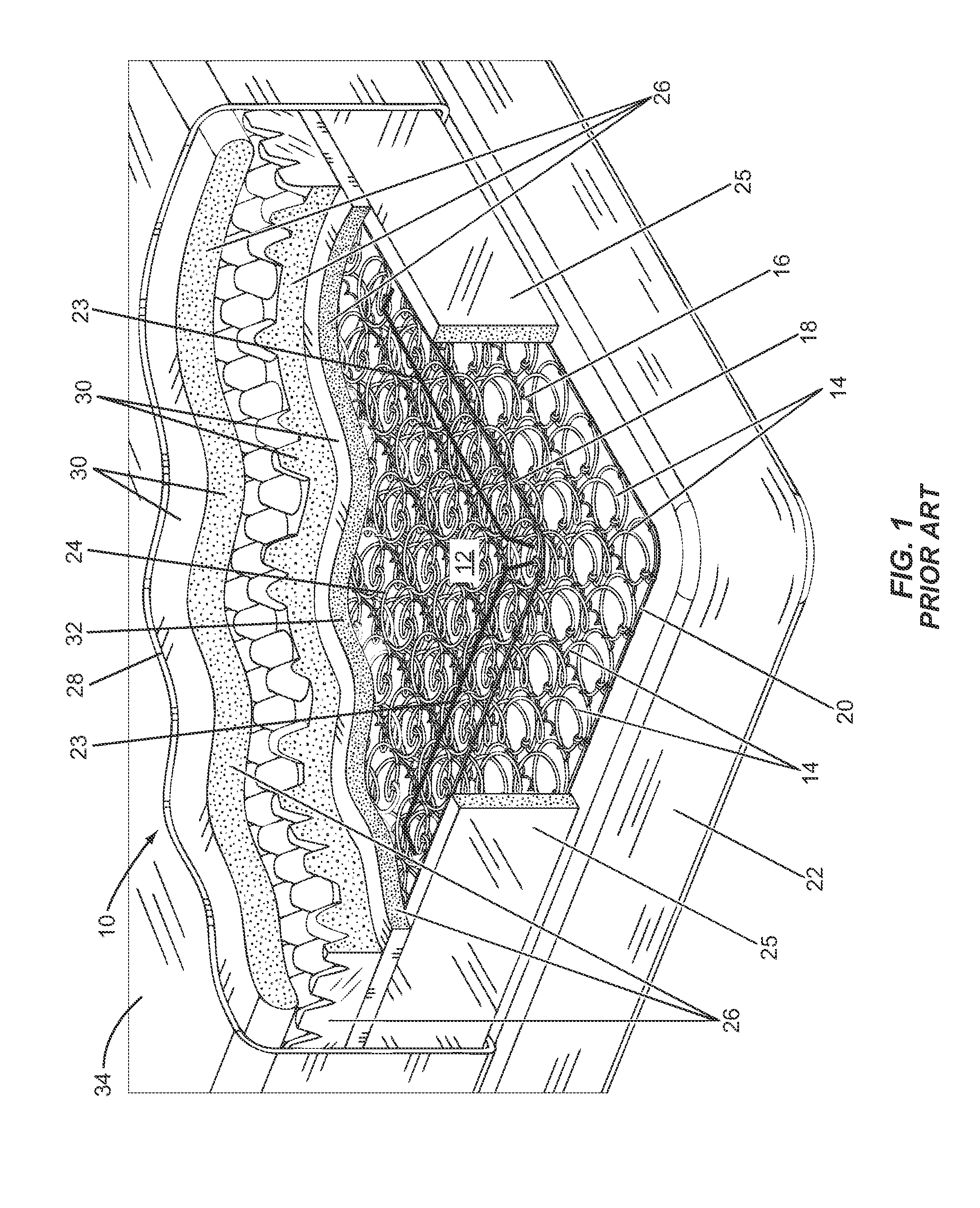Composite cushioning structure(s) with spatially variable cushioning properties and related materials, cushioning assemblies, and methods for producing same
- Summary
- Abstract
- Description
- Claims
- Application Information
AI Technical Summary
Benefits of technology
Problems solved by technology
Method used
Image
Examples
Embodiment Construction
[0013]Embodiments disclosed in the detailed description include composite cushioning structures with spatially variable cushioning properties and related materials and methods for producing same. This is also referred to herein as a gradient property foam (GPF) composite cushioning structure. A GPF composite cushioning structure is a two or more phase composite cushioning structure in which spatially variable distribution of two or more second non-solid phases into a primary solid phase foam controls the local cushioning properties of the final composite cushioning structure. Spatially variable distribution is the distribution of the second cushioning component(s) in a non-uniform manner in at least a portion of the first cushioning component. For example, spatially variable distribution can include spatially varying the density and / or volume of the second cushioning component(s) disposed in at least a portion of the first cushioning component. In this manner, the cushioning charact...
PUM
| Property | Measurement | Unit |
|---|---|---|
| Time | aaaaa | aaaaa |
| Mass | aaaaa | aaaaa |
| Density | aaaaa | aaaaa |
Abstract
Description
Claims
Application Information
 Login to View More
Login to View More - R&D
- Intellectual Property
- Life Sciences
- Materials
- Tech Scout
- Unparalleled Data Quality
- Higher Quality Content
- 60% Fewer Hallucinations
Browse by: Latest US Patents, China's latest patents, Technical Efficacy Thesaurus, Application Domain, Technology Topic, Popular Technical Reports.
© 2025 PatSnap. All rights reserved.Legal|Privacy policy|Modern Slavery Act Transparency Statement|Sitemap|About US| Contact US: help@patsnap.com



